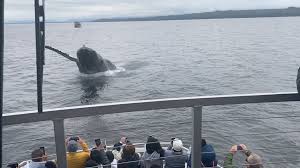Revitalizing Alaska’s Mariculture and Exploring New Avenues for Oysters: A Dual Perspective on Sustainability
 Alaska’s mariculture sector is experiencing a renaissance, driven by substantial investment and a strategic push towards diversifying local economies. The $49 million investment funneled into Alaska’s Indigenous mariculture initiatives is creating ripples of change, empowering communities and stimulating sustainable growth. This effort, spearheaded by local partnerships and the Southeast Conference, is not just about producing seafood but also about preserving cultural heritage and fostering environmental stewardship. Indigenous tribes are taking the lead, utilizing their deep-rooted knowledge of marine ecosystems to enhance mariculture practices that are both sustainable and economically beneficial. The investment is set to create jobs, boost food security, and contribute to long-term environmental conservation efforts.
Alaska’s mariculture sector is experiencing a renaissance, driven by substantial investment and a strategic push towards diversifying local economies. The $49 million investment funneled into Alaska’s Indigenous mariculture initiatives is creating ripples of change, empowering communities and stimulating sustainable growth. This effort, spearheaded by local partnerships and the Southeast Conference, is not just about producing seafood but also about preserving cultural heritage and fostering environmental stewardship. Indigenous tribes are taking the lead, utilizing their deep-rooted knowledge of marine ecosystems to enhance mariculture practices that are both sustainable and economically beneficial. The investment is set to create jobs, boost food security, and contribute to long-term environmental conservation efforts.
However, the mariculture industry isn’t without its challenges. One example comes from Alaska’s oyster farming community, which has recently been impacted by the decline in cruise ship tourism—a key revenue stream for many farmers. Oysters, once destined for tourists, are now pivoting towards online sales to maintain revenue. The shift towards e-commerce is both a challenge and an opportunity, as it opens up access to wider markets while forcing producers to adapt to new logistical hurdles.
The combined narrative of these two developments showcases the resilience of Alaska’s mariculture sector. On one hand, Indigenous-led initiatives are receiving the investment needed to scale sustainable practices, while on the other, local businesses like oyster farms are innovating to survive in a post-pandemic economy. Together, these efforts are shaping a future where Alaska’s mariculture is not only a vital part of its economy but also a symbol of environmental and cultural sustainability.
